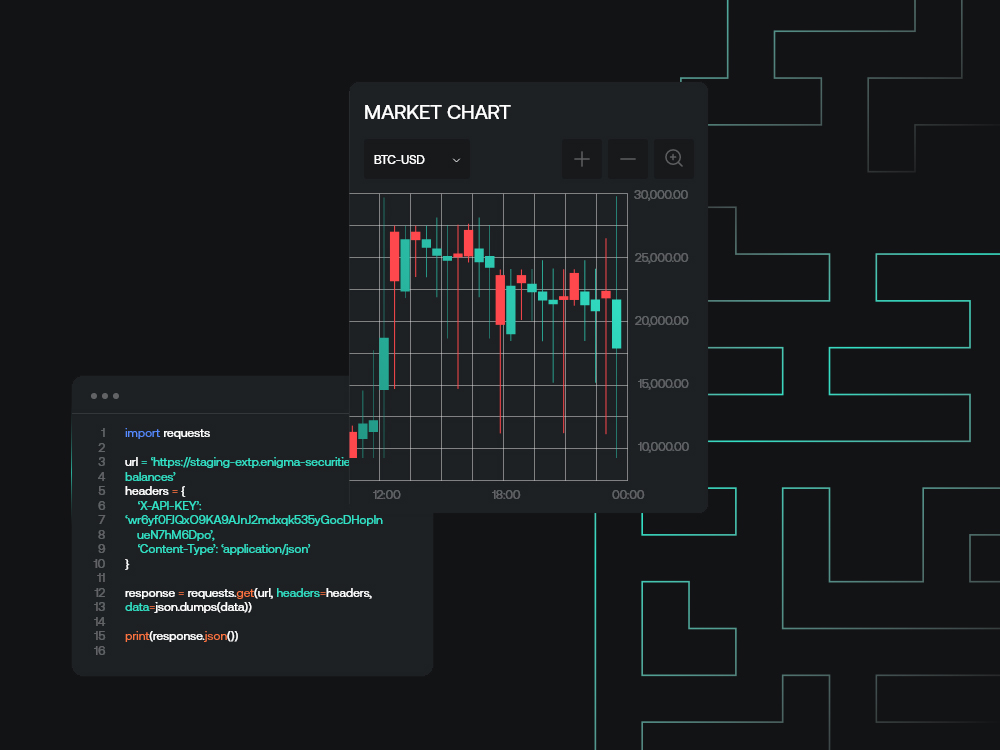-
Share on Facebook
-
Share on Twitter
-
Share on LinkedIn
-
Copy link
Copied to clipboard
CRV, Aave, and collateralisation
Back in early August, as part of our monthly summary, we referenced Curve, Aave, and Michael Egorov as something to keep an eye on, and promised to revisit if necessary. While things quietened down in that first week of August on that front, they have become more alive again in the last couple of days with CRV’s price dropping again, so it seems as good a time as any to revisit.

Executive Summary
-
CRV and Michael Egorov's debt positions have come back into focus in recent days
-
Egorov has over 200 million CRV tokens presented as collateral for fiat loans
-
Those collateral positions may come under threat should price keep dropping
Back in early August, as part of our monthly summary, we referenced Curve, Aave, and Michael Egorov as something to keep an eye on, and promised to revisit if necessary. While things quietened down in that first week of August on that front, they have become more alive again in the last couple of days with CRV’s price dropping again, so it seems as good a time as any to revisit.
Curve/CRV is widely acknowledged as a DeFi ‘blue chip’, having come into being right at the start of the era of Ethereum DeFi; the protocol itself was launched in January 2020, and the CRV token launched in mid-August 2020, just after he initial rush of ‘DeFi summer’ and before the local top (in terms of ETH price and in terms of the interest in DeFi relative to other components of the ecosystem) in the first week of September.
If one remembers DeFi summer, one will remember that this was, for the most part, the Rubicon moment for new crypto tokens giving up on trying to present some high-minded, fundamentally-grounded case for future valuations, in favour of leaning into governance as an explicit reason to be, and simple exposure to the New Thing as an implicit one. CRV was very much of that ilk. CRV is the governance token for the managing Curve DAO (i.e. you need to lock Curve in order to vote on governance proposals), and is also used as an additional incentive and reward for liquidity providers on Curve. In a very similar vein to the likes of YFI and even UNI, that’s the sum of it for now and for he near future.
It would be fair to describe Curve overall as a success story. It remains one of the majorplayers in the DeFi space, with its pools having a TVL of around $2.2bn (per DeFiLlama data) – only five protocols are higher in terms of pure TVL, and only two that are vaguely comparable (Uniswap and Aave). Curve liqudity pools are a core DeFi primitive, crucial in a number of areas (notably stablecoin exchange through 3pool mechanisms and stETH/ETH exchange for Lido’s liquid staking product).
However, this success has not generally translated to token outperformance. CRV remains a top-100 coin by marketcap, at about $400m at the time of writing, but even if we start recording from October 2020 to remove early price volatility, we see a 90%+ drawdown against ETH and a succession of lower highs since the start of 2021:

This is far from unique to Curve. Most DeFi coins have suffered severe drawdowns in relative terms as the gloss wears off and they find themselves largely unable to justify their valuation from pure speculation; CRV is one of the worse-off, but its ratio of 0.17 market cap to TVL is extremely similar to MakerDAO and AAVE’s, with only Uniswap (1.05), Synthetix (1.7) and dYdX (1.01) trading above par or even close to it among the top 30 at the time of writing, and all three having specific reasons for that (Uniswap constantly dangles the ‘fee switch’ for revenue distribution in the future; Synthetix’s token is used as collateral within the protocol; dYdX is essentially a centralised exchange and with the potential room for scope growth is hence is seen as having growth potential untrue of most similar protocols).
In isolation, this would not be an issue for anyone except CRV holders. The problem comes in CRV’s tokenomics. CRV distributed 30% of its tokens (with vesting) off the bat at launch to ‘shareholders’, i.e. early investors and employees in the platform, with 8% held back for community and employees and the other 62% to be distributed over time to liquidity providers.
33% combined for team and investors is in itself not too exceptional; UNI for instance distributed 40% of its supply as such. The problem is that a huge portion of those tokens have ended up in one set of hands – founder Michael Egorov – and that portion has grown to constitute a larger portion still of circulating supply (Curve’s release schedule suggests around 1.6 billion tokens have been released at this point, but Curve’s own API stats only 850 million are circulating, with the remainder presumably unissued or locked for vote). It is unclear how much exactly Egorov has received and/or has due to him in CRV, but we know that it is upwards of 500 million tokens (with total shareholder/employee distribution in the 850-900 million range at end of vesting according to documents).
For one founder, this is excessive, but again – not automatically a problem for anyone but CRV holders. The problem, in essence, is that CRV was at one point considered a blue-chip, and therefore, a number of DeFi protocols were willing to take it on as collateral. (Indeed, given the environment that CRV and other protocols came up in during 2020, it would be more surprising if they were not). Egorov leveraged this to the fullest, putting up CRV as collateral in order to loan out from a huge number of DeFi lenders over a few years.
Funnily enough, the general mechanism here is a lot less alien to the general industry imagination than it might have been a year ago. To put it simply: cashing out in public markets on even mid-cap crypto assets is hard because liquidity is thin and it is difficult to impossible to mask transactions and intent when doing so. Taking out loans is more capital-efficient and makes the process much smoother overall. This is particularly true if you cheat somewhere in the process (as we saw with Three Arrows Capital and Alameda among others), but even when doing everything above aboard, it is usually a far more effective way to cash out at scale.
The problem here is that there are, ultimately, no free lunches anywhere. Overcollateralised loans are still risky for the lending party if the collateral ends up worthless, or otherwise cannot be sold at par. While far dwarved by any number of other threats, bad debt is a risk that lenders in DeFi still have to deal with.
Amusingly, Aave have had to deal with bad debt related to Egorov and CRV before, but for reasons in the inverse. Avi Eisenberg (who is currently facing market manipulation and wire fraud charges in the US in relation to a $116m attack on Solana DeFi protocol Mango Markets last year) borrowed huge amounts of CRV tokens through Aave as part of an attempt to crash CRV price low enough to liquidate Egorov’s position in November. The attack was unsuccessful, but Aave was left with bad debt upon liquidation of Eisenberg’s own position in the process.
In that case, the bad debt was covered by the protocol treasury; however, in Egorov’s case, the position has become so vast (constituting a significant plurality of all circulating CRV) that the bad debt could end up being far more than could be reasonably covered.
This issue has been brought into focus over the last few weeks as CRV has come under pressure. A number of protocols pools were hacked on July 30th due to a flaw in certain versions of Curve’s code, including a number of CRV/ETH pools; while most losses were recovered and damage to Curve itself was limited, it did cause a flash crash in price, and brought the liquidation question back into view.
Egorov has been taking steps over the last few weeks to pay down the debt; the problem is that there are limits to which he is incentivised to do so, especially as he approaches the end of the CRV vesting period. The point of the loans was ultimately, and explicitly, to cash out CRV positions, and he has made use of the fiat derived from that, notably with a $59m purchase of two mansions in Melbourne.
The short-term answer has come in the form of another method of reducing market impact from sales – OTC deals. Egorov has sold an estimated 110m CRV at $0.40 per (around a 35% discount) to a number of parties including DWF Labs, Yearn, and by appearances Justin Sun personally, in order to pay down certain positions. Egorov has also added more collateral to certain loans, as he has been doing throughout. There are reportedly handshake agreements for said tokens to not be sold on the open market for a certain period, but specifics on this are unclear.
Price stabilised for a time after the sales earlier this month; however, CRV has started trending downwards again over the last few days towards that $0.40 OTC price. The remaining Aave position is currently 91% over-collateralised, implying liquidation at around $0.24, although the health ratio on loans on other protocols is somewhat lower.
To get to the bottom line here: the phrase ‘liquidation cascade’ has come up a lot with respects to the CRV situation, with the implication being that there may be contagion risks if (or, at this point, when) the Egorov situation fully comes to a head. It needs to be said here that unless Egorov takes out new, significant positions (which at this point he would struggle to do, with Aave in particular seeking to tighten lending rules to reduce the threat of exposure to any single collateral asset). The Aave position is now small enough at $14m that even an absolute worst-case scenario would be manageable for the protocol; positions on protocols like Frax and Inverse are less healthy and more concerning for those protocols, but nothing crippling.
There is no direct mechanistic threat at this point. The concern, instead, would be around CRV and deincentivisation. Egorov continues to post around 250 million CRV as collateral with various protocols, and while the bad debt potentially incurred from liquidations (if they were just allowed to play out) would be disastrous for CRV’s price, it would not cause a mechanistic contagion. However, between the liquidations and the potential selling-on of OTC-acquired CRV, and the struggles of Curve in general terms as of late (we should note here that the current $2.2bn TVL is the lowest since January 2021, with a great deal of capital that was stolen or withdrawn post-hack not seeing its way back into the protocol after), we could see remaining liqudity largely pulled from the protocol (bearing in mind that CRV emissions are the major incentive for people to LP on the platform in the first place).
The effects of that in the short- and medium-term are the point where things become unknowable and concerning. The weakness being shown over the last week or so should be of concern to CRV holders, and is relevant for DeFi in general, even if only for the potential affinity sells on similar 2020 tokens with questionable fundamentals. However, as much as we like to say things are worth monitoring closely and keeping an eye on and so on in the pages of our research here, it’s important to understand what’s happening here; this is not LUNA or FTT. One can be aware, cautious even (given the general market outlook, which as we’ve consistently said, is negative until Grayscale and may even be negative coming out of Grayscale at this point), but there should be no cause for panic here.



